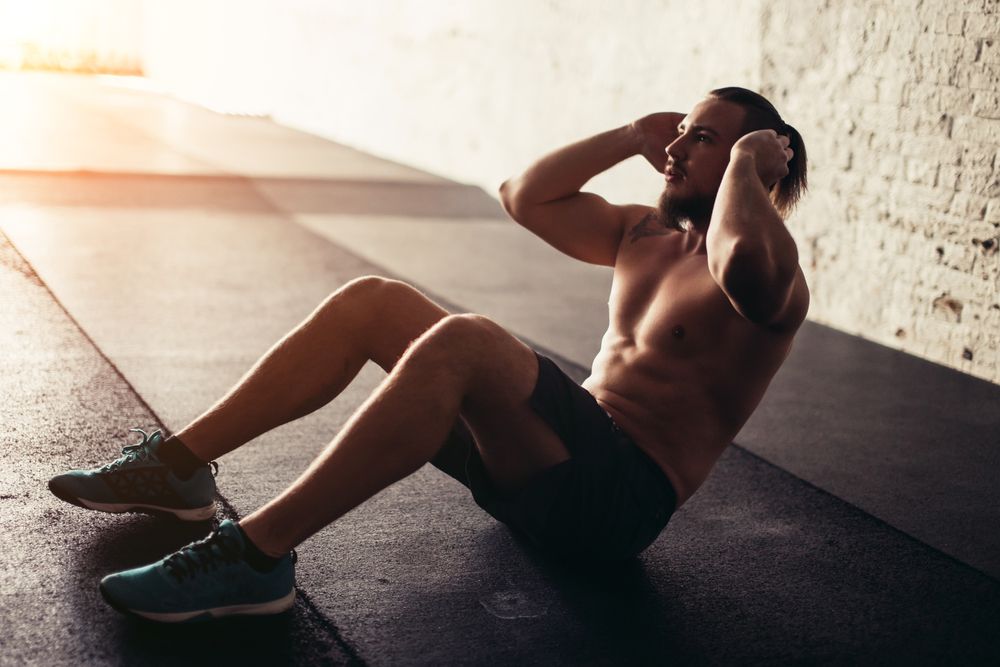The ongoing discourse between bodyweight exercises and weightlifting continues to intrigue fitness enthusiasts, sparking debates and inquiries into the most effective approach for muscle building and strength development. These two methods represent distinct paradigms: bodyweight exercises utilize the body itself as resistance, encompassing movements like push-ups, pull-ups, and squats, while weightlifting involves using various equipment such as dumbbells and kettlebells to target specific muscle groups.
At the core of this discussion lies the pursuit of efficiency in achieving fitness objectives. Bodyweight workouts highlight accessibility and versatility, emphasizing their convenience and ability to enhance functional strength. Conversely, weightlifting provides precise control over resistance, enabling the application of progressive overload, a fundamental principle for muscle growth and strength enhancement.
In my opinion, any form of exercise is beneficial compared to not exercising at all, and I incorporate both bodyweight exercises and weightlifting into my routine. However, when deciding between the two, your choice should consider factors such as time availability, accessibility, and your specific fitness goals.
Before determining which method is superior for muscle building, let's explore the advantages of each approach.
Benefits of bodyweight exercises

Utilizing your body weight for workouts offers numerous advantages:
Convenience: Bodyweight workouts are incredibly convenient, allowing you to exercise anywhere, whether in your living room, a hotel room, or outdoors, without needing specialized equipment.
Affordability: Bodyweight exercises are cost-effective since they only require your own body, making at-home workouts budget-friendly and accessible to everyone.
Efficiency: Bodyweight workouts can be incredibly efficient, allowing seamless transitions between exercises and maintaining an elevated heart rate for optimal calorie burn, similar to interval training.
Easily Customizable: By modifying leverage and range of motion or incorporating variations, bodyweight exercises can be easily adjusted to suit different fitness levels and training needs. There's a multitude of modifications available for moves like lunges, pull-ups, and ab exercises, catering to beginners and advanced individuals alike. Plus, movements like push-ups and squats engage multiple muscle groups concurrently, fostering functional strength essential for daily activities.
Challenging: These exercises provide a challenging workout, simultaneously improving cardiovascular endurance and muscle strength, making them suitable for individuals at all fitness levels.
Benefits of lifting weights

Lifting weights provides unique advantages for muscle growth and strength development:
Enhanced Muscle Hypertrophy and Growth: Weightlifting offers precise control over resistance, promoting progressive overload, a key principle for muscle hypertrophy and strength gains. Heavy compound lifts like squats, deadlifts, and bench presses are particularly effective for overall strength and muscle mass. Additionally, weightlifting induces micro-tears in muscle fibers, enhancing repair and strengthening during rest, resulting in increased muscle mass over time.
Bone Health Support: By increasing bone density and strength, weightlifting contributes to improved bone health and may reduce the risk of osteoporosis and fractures, especially crucial as individuals age.
Boosted Metabolism and Fat Loss: Regular weightlifting sessions can help boost metabolism and facilitate fat loss by increasing calorie expenditure, even during rest, as lean muscle mass requires more energy to maintain than fat tissue.
Improved Athletic Performance: Through targeted muscle isolation, weightlifting enhances physical performance by improving muscle power, endurance, and coordination, benefiting athletes and individuals engaged in various sports and activities.
Variety: The wide array of equipment options in weightlifting, including barbells, dumbbells, machines, and resistance bands, offers diverse training stimuli, catering to various preferences and training styles.
And the best part? You don't need a high-class facility to take advantage of these benefits. A simple pair of dumbbells or kettlebells is more than enough to get started with weightlifting!
Which is more effective for building muscle?

Both bodyweight exercises and lifting weights offer distinct advantages in building muscle and strength, contingent upon various factors such as individual goals, preferences, and experience levels.
When comparing effectiveness, both modalities can effectively build muscle when incorporated into a well-structured training program. While bodyweight exercises are often underestimated for muscle growth, they are particularly beneficial for beginners or those prioritizing functional strength. Conversely, lifting weights generally provides more opportunities for progressive overload, leading to greater absolute strength gains and muscle hypertrophy.
Ultimately, the choice between bodyweight exercises and lifting weights depends on individual preferences. Whether it's the simplicity of bodyweight movements or the precision of weightlifting, the key is to find what works best for you and aligns with your fitness aspirations.

